Last Updated on March 30, 2023
A feather bed is a key component for a plush, hotel-like bed.
For a bed that feels like a cloud, a feather bed is a must! Assuming that you are not allergic, a feather bed will provide you with a comfortable bed that you’ll never want to leave.
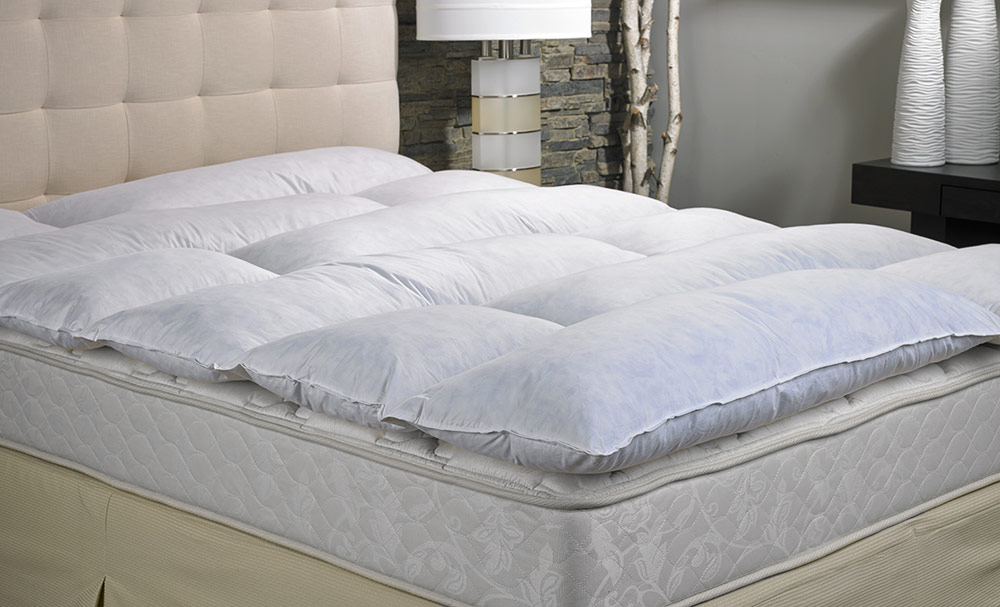
A good feather bed will also cost you anywhere from $100 to $250. So naturally, you’ll want to make sure it lasts a while.
What is awhile?
A feather bed should last you anywhere between 8 to 10 years. If you take care of it properly, it could even last up to 12 years. It’s all about how you maintain it.
Here are some tips on how to take care of your feather bed, and keep it in good condition for as long as possible.
Use A Feather Bed Protector
Using a feather bed protector will save you a lot of money and hassle. Click on the blue link to check them out on Amazon.
A feather bed is much like a comforter or a pillow – it’s just a big bag of feathers. So why not treat it like one?
Pillows get pillowcases or pillow protectors, comforters get duvet covers; but few people actually use a cover for their feather bed.
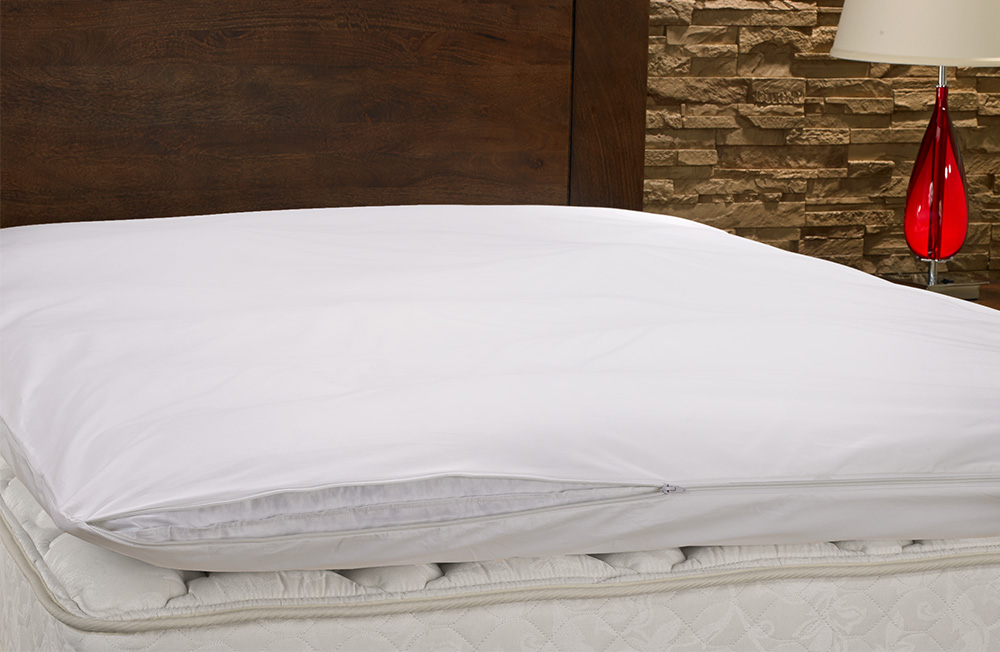
A good feather bed protector will accomplish two things:
- It will keep it clean
- It will keep dust mites and bugs out
Laundering a feather bed is one of the main ways to add wear and tear; so washing it as little as possible is the single most effective way to make it last as long as possible.
Dust mites and other bugs will nest inside the feather bed, and wreak all kinds of havoc. Keeping them out should also be a priority.
Launder Your Feather Bed Properly
Generally speaking, you’ll want to wash your feather bed once a year or so.
Washing a feather bed at home is almost impossible in a common washing machine – you’ll need to take it to a laundry service or professional dry cleaner.
Seriously – don’t try it at home.
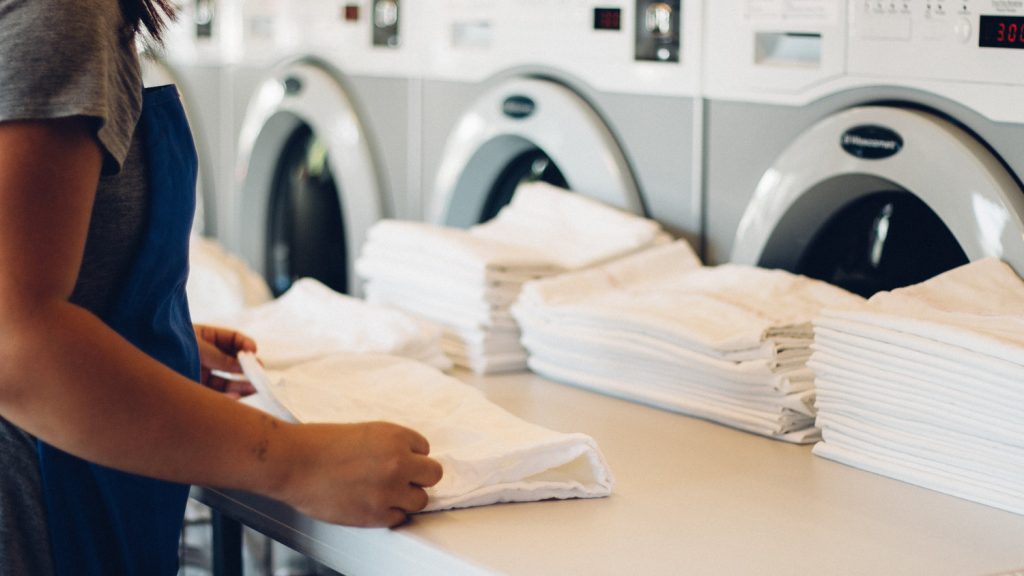
Professional cleaning can be expensive – not to mention the hassle of actually driving it over there, and picking it up later. Save yourself the hassle, and the expense, and start using a feather bed protector!
If you do get some stains on the outer cover; spot clean using a damp cloth, and any other stain remover you normally use with bedding.
If you don’t have to wash the entire feather bed, then avoid doing so if possible.
Dry Your Feather Bed Properly
If you do get your feather bed laundered, or if you clean a few spots yourself – make sure you allow it to dry properly.
Damp feathers can get moldy very quickly! Let it fully dry before placing it back inside your bed.
Cover It With A Mattress Pad
Covering your feather bed with a mattress pad will add another layer of plush comfort, but it will add another layer of protection as well.
Feathers – like other natural fill materials – break down over time when they are compressed. A mattress pad will reduce the load on your feather bed, and add a few years to its life.
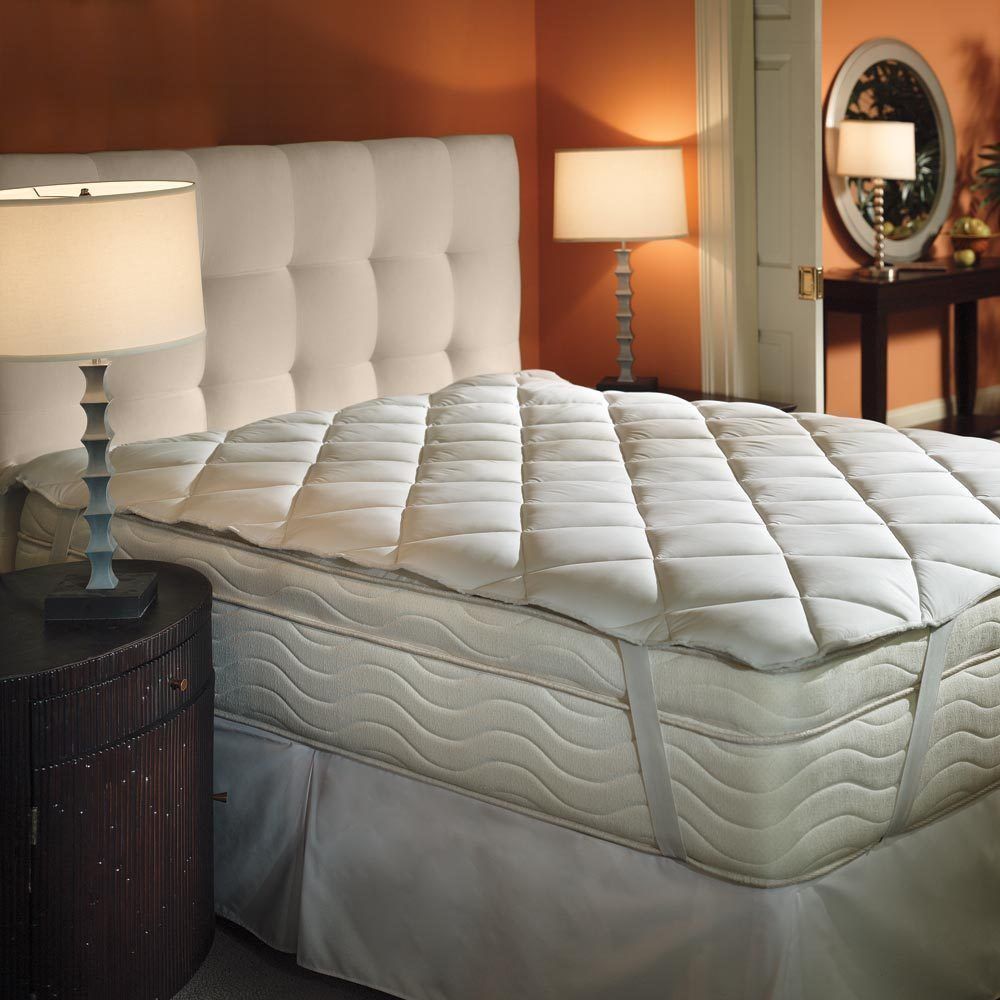
To avoid adding too much bulk to your bed, especially on the sides, look for a mattress pad with anchor straps, instead of the regular elastic skirted variety.
Rotate And Flip Your Feather Bed
All feather beds have a common wear pattern, and the majority of it is concentrated in a few pressure points, like your shoulders, butt, heels, etc.
If you examine a feather bed that has been used for several years, the portions under those body parts will usually be the most worn out.
When the feathers inside those areas break down, those areas deflate. Your feather bed will be less comfortable at best, and a lumpy mess at worst.

To ensure that your feather bed wears evenly, flip and rotate it every time you wash the sheets. The portion that was at the top of the bed, will now go to the foot of the bed. The side that was facing you, will now face the floor.
Repair It, Don’t Replace
Feather beds usually have a box pattern. They are constructed with this box stitch pattern to keep the feather fill evenly distributed. If you count the number of boxes, this number should be somewhere between 25 to 40.
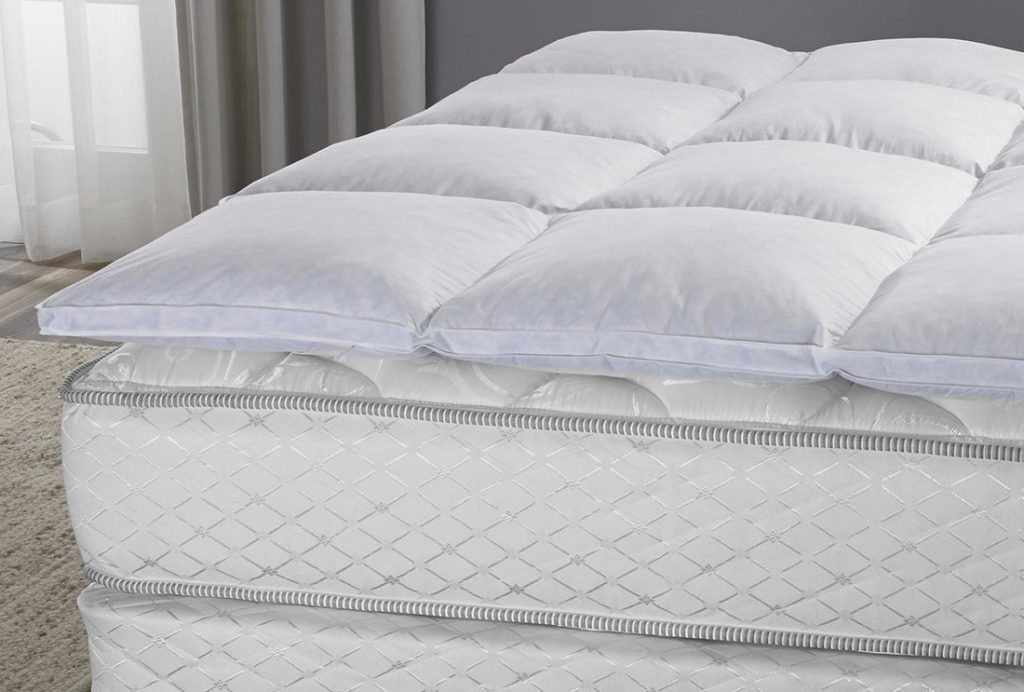
If you notice that one or several of the squares have gone flat – or if the feathers have just leaked out, consider repairing your feather bed instead of replacing it.
Repairing a feather bed is quite easy – especially if you have the most basic sewing skills.
To repair or replace the feather fill, you don’t need to fill the entire feather bed – just the individual squares that are affected.
You can purchase replacement feather fill in increments of as little as 1/2 pound. For the average feather bed, that is enough to re-fill about 2-4 squares depending on your actual model and box size.
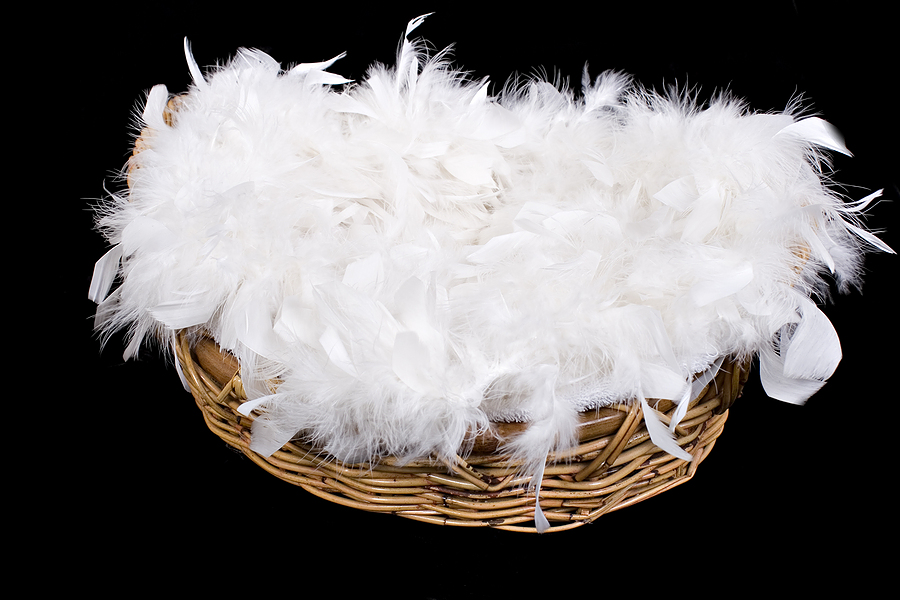
To repair or re-fill a feather bed, make an incision along the edge of an individual square, replace the fill, and then close the opening with a needle and thread. It’s that simple!
Repairing a feather bed will cost about 10% of what it would to replace it entirely.
Don’t Abuse Your Featherbed
Added friction on the feathers dramatically reduces their lifespan.
Avoid unnecessary things like jumping on your bed, etc. Feathers are fragile. While they can withstand the stress of holding your body weight, increased friction from jumping, along with your weight will damage feathers incredibly fast.

Feathers also have sharp quills. Jumping on the feather bed could cause the quills to puncture through the cover. This could lead to a large leak down the road.
Avoid unnecessary wear and tear on your feather bed – don’t abuse it!
Don’t Compress
For the same reasons as above, avoid compressing your feather bed when not in use. If you are storing away the feather bed, avoid the temptation to squeeze or compress it into a small box, or tight space.
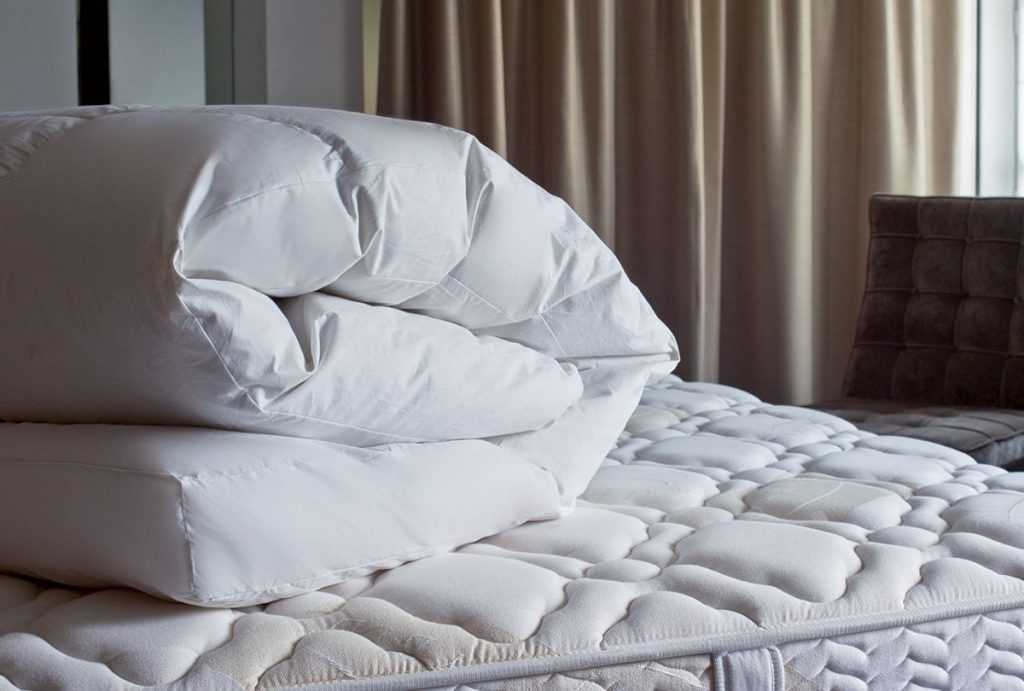
Roll it up as loosely as possible, and give it plenty of space. The more you stuff and crinkle a featherbed, the more damage you will cause to the feathers.
Final Thoughts
Following the guidelines above should lengthen the lifespan of your feather bed.
A feather bed, when properly maintained, should last at least a good 10 years or so. A good feather bed is not cheap – so take the necessary steps to get the most out of it:
- Use a feather bed protector
- Launder properly, but as little as possible
- Dry it properly
- Use a mattress pad
- Rotate every few weeks
- Don’t abuse it
- Don’t compress
Following the 7 steps above is the best way to ensure that your feather bed lasts as long as possible, and provides you with a cloud-like bed.
A featherbed will help you relax and restore your body – so give it the respect that it deserves.

So am I to put a feather bed protector on the featherbed and then a mattress pad with anchor straps on top of the featherbed and featherbed protector? Seems like a lot of layers.
Susan,
Yes, that’s exactly how it would work! A featherbed protector is a thick as a sheet, so it wouldn’t really add any thickness. As far as the mattress pad; for a layered setup, you would choose a thin mattress pad, not one of the plush models. The purpose of the pad here is to keep everything in place, not to necessarily add another layer of padding.
My feather bed cover is in bad shape. I would like to have it replaced. Are there companies that do that. I am in Dearborn, Mi. The cover fabric is too bad to repair
How do I get rid of a feather topper? Recycle ?
If you want to recycle it, animal shelters love bedding donations. Assuming that it’s not leaking feathers, and that it’s still in decent condition, I would assume that your local shelters would accept it.
Thank you for the advice. I think your post is about as straight forward & as practical as I’ve seen in quite awhile for ANY cleaning of an item. I needed to find out how long to keep a featherbed, check; how to launder, check; how to store, check; where to donate, check; is ir good to cover w/pad or cover, check; and a couple other pieces of info that were helpful. Again kudos on such a concise & helpful but easy to follow info page!